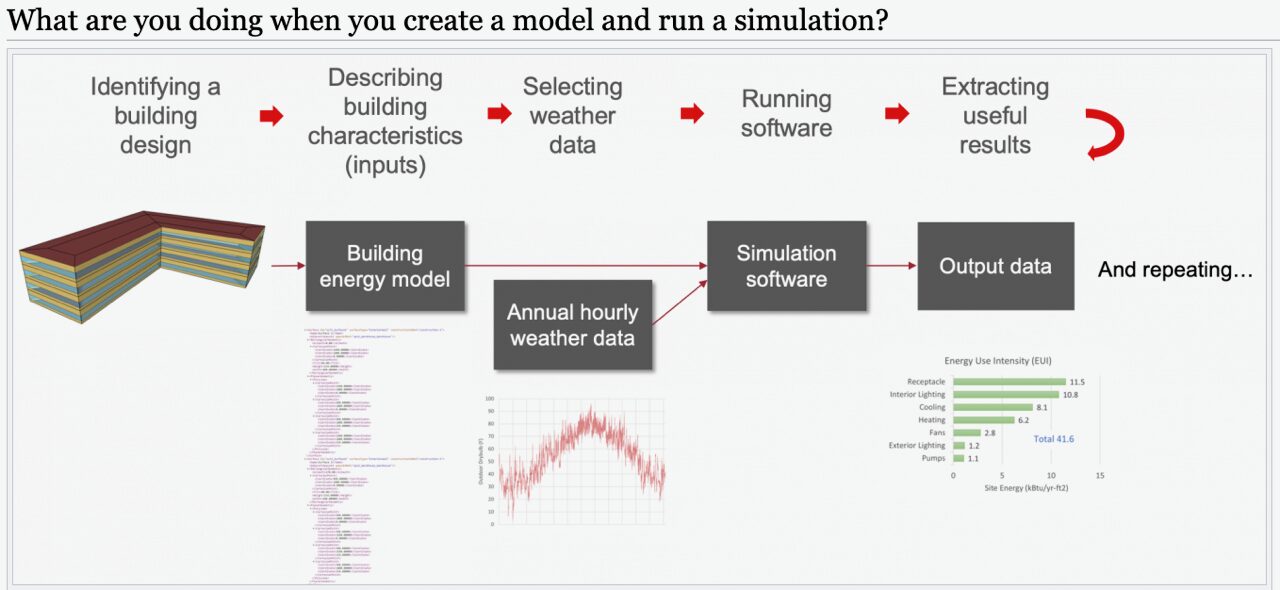Note that the following post was originally published in May 2019.
What is the one thing no one tells you about building performance modeling?
-Wondering in Wisconsin
Dear Wondering,
Only one thing? Many are the unspoken secrets of the ancient modelers! But here’s one.
Modeling can be a lonely endeavor, but we have a companion we can call on in times of need. Those times are often late at night, past the close-of-business deadline: the modeler alone with the model and the unexpected outputs. Desperate acts of inputting fail to provide satisfaction. What’s going on? Why does cooling energy go up? Why are my hours unmet?
What no one told me is that, in these times of despair, when everyone else was already asleep, I had a friend at hand. That friend is my faithful late-night companion, the Hourly Report. Over the years we’ve spent many intimate hours together: probing, plotting, puzzling. There’s not always a happy ending, but the Hourly Report can always show me the supply air temperature or the outdoor air fraction.
Our models have lots of inputs! We can't necessarily assume that a 57F input for supply air temperature will result in a 57F supply air temperature. There are so many other inputs that can get in the way. There are coil capacities, reset controllers, ventilation air controllers, and all the chiller and boiler plant inputs. These other inputs may conspire to create unexpected behavior.
Enter our friend the Hourly Report. Just yesterday, I was given a model showing suspiciously low heating energy consumption. This was one of those unexpected and unexplained outputs. Nothing was obviously wrong with the inputs. What was going on?
I asked the Hourly Report, and it showed me that the condenser water in the loop serving the water-source heat pumps reached a temperature of -14,523 degrees. Hmmm...
(That’s another thing no one told me; sometimes our models operate in some other physical realm. And for those who are curious, this was a DOE2.1E model initially created several years ago.)
Like many of our friends, the Hourly Report is not perfect. It helps us identify problems but doesn’t necessarily tell us how to resolve them. In this case, it took further probing and puzzling to discover that there were errors in some inputs for heating coil capacities. With those resolved, the Hourly Report showed reasonable condenser-water loop conditions and provided reassurance that the new outputs were reasonable.
No one told me how much I would come to rely on the Hourly Report. We spend time together on nearly every project, and I learn something every time.







